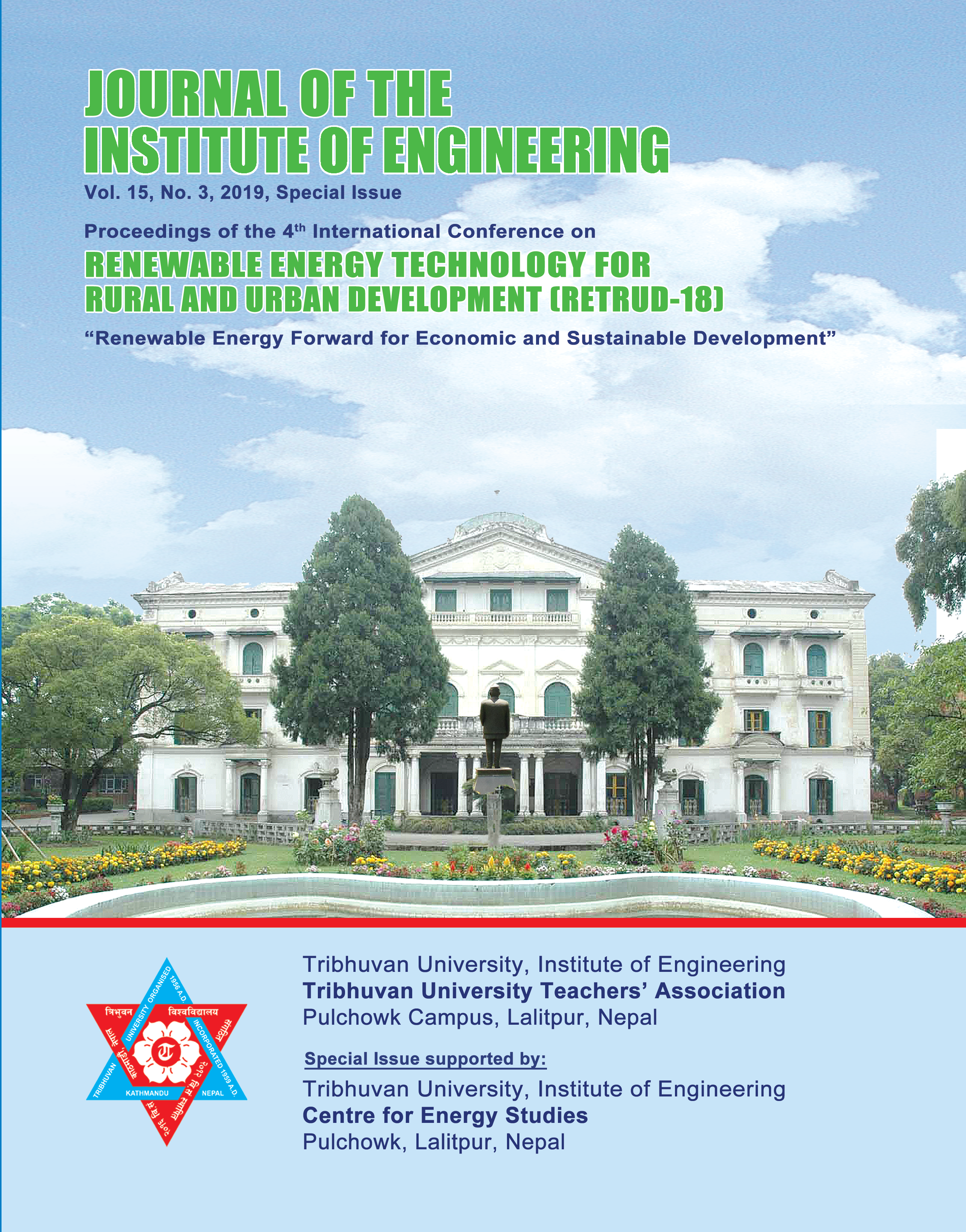Energy Security and Scenario Analysis of Province One of Federal Democratic Republic of Nepal
DOI:
https://doi.org/10.3126/jie.v15i3.32158Keywords:
Energy Mix, Fuel Mix, Energy Security, Province Level, Indicators, LEAP, Scenario, Policy InterventionAbstract
This paper presents the current energy security status of the Province One of Federal Democratic Republic Nepal using numerous indicators. In addition to that, with the development of five economic growth scenarios i.e. Normal growth (NOR) (5.80%), Low growth (LOW) (4.20%), High growth (HIG) (6.80%), Accelerated growth (ACC) (8.50%), and Intervention scenario (INT) on Normal growth scenario (NOR), the future energy mix and energy security indicators for the year 2040 are also calculated. The thesis also gives an overview of the variation/progress of the different indicators during the considered period of study (2017-2040). On the basis of compilation of data published by Water and Energy Commission Secretariat (WECS) and use of model developed in Long Range Energy Alternative Planning (LEAP), the study shows the increase in demand of the final energy consumption of province in Normal growth scenario to 101.8 million GJ at 2040 from 80.2 million GJ at 2017, whereby residential sector being the largest energy consuming sector with share of 68% in the total energy mix. However, the energy consumption increases to only 86.8 million GJ at the end year in the Intervention scenario. Similarly, the electricity consumption/demand increases by 120% and 390% in the normal and intervention economic growth scenario respectively. The study also shows that the, energy intensity in the intervention scenario is brought down to 4.44 GJ/USD1000 compared to that of 15 GJ/USD1000 in the base year. Also, the electricity consumption per capita is increased to 574 kWh from 116 kWh in the base year in INT scenario. Moreover, the GHG emission in the normal growth scenario at the end year will be 592.8 kg/Capita i.e. 59.5% increase from the base year. However, with the intervention scenario adopted, the GHG emission can be limited to only 385.2 kg/Capita in the end year, which is 8% increase from the base year value of 371.8 kg/Capita. However, these values are only achieved if the provincial government helps implementing federal government's plan of promoting the renewable energy systems and technologies instead of traditional fuel woods and fossil fuels system.
Downloads
Downloads
Published
How to Cite
Issue
Section
License
The Copyright is held by Journal of the Institute of Engineering, IOE, TU




